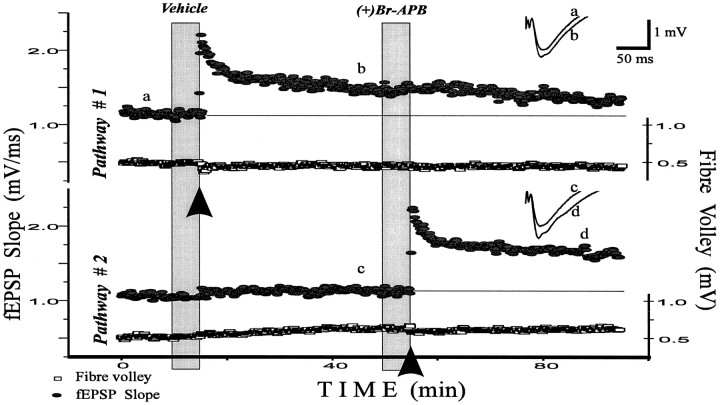Fig. 1.
D1/D5 agonist (+)bromo-APB facilitates early LTP of fEPSP in CA1 hippocampal region. This is an example of the general experimental design used in this paper. Both pathways are alternately stimulated at 0.1 Hz. First, LTP was evoked by a tetanus onPathway #1 in control ACSF [0.022% DMSO solution in ACSF was applied before this tetanus, because it served as a vehicle for a subsequent (+)bromo-APB application ((+)Br-APB)]. Thirty-five minutes later, the D1/D5 agonist (+)bromo-APB (5 μm) was perfused for 5 min, and a tetanus was then given on Pathway #2. The potentiation was larger than in control. Inserts compare fEPSPs before and 30 min after the tetanus in control (a, b) and after drug application (c, d). Application time is shown by filled vertical columns; tetani are indicated by thearrows. We randomly varied whether control or test substances were given first. The amplitude of the fiber volley (Fibre volley, lower traces in pairs), an indicator of the number of axons stimulated, was not affected by vehicle or drugs.

